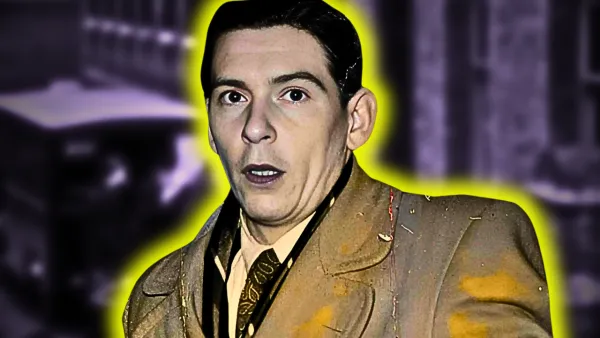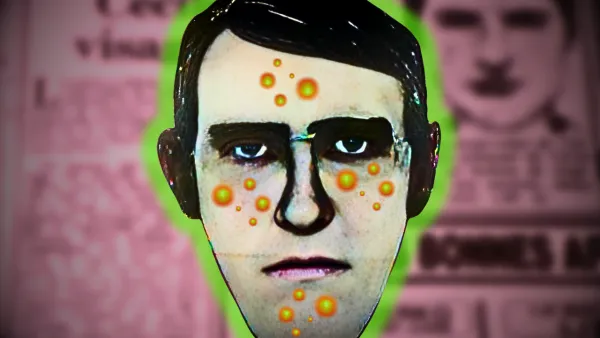Jeffrey Dahmer Kept 72 Vomit-Worthy Polaroids In His Bachelor Apartment
Jeffrey Dahmer, one of America's most infamous serial killers, terrorized Milwaukee for over a decade before his gruesome crimes were finally uncovered in 1991.
Listen to this article
While Dahmer's horrific acts of murder and cannibalism shocked the nation, it was a collection of Polaroid photographs found in his apartment that provided some of the most damning and disturbing evidence against him.
The Discovery That Broke the Case
On July 22, 1991, Milwaukee police officers responded to a call about a man wandering the streets with a pair of handcuffs dangling from his wrist. This man was Tracy Edwards, who had narrowly escaped from Jeffrey Dahmer's apartment after being held captive there. Edwards led police back to Dahmer's residence, apartment 213 at the Oxford Apartments.

The man, soon identified as Tracy Edwards, a 32-year-old black man from Tupelo Mississippi, had handcuffs dangling from his left wrist. Edwards told the cops that he had to "use karate" to fend off the "freak" that had tried to kill him.
The freak was Jeffrey Dahmer, and Tracy Edwards nearly became his 18th victim.
Jeffrey Dahmer's Apartment
In a controversial decision, the two police officers that spotted Tracy Edwards took the victim back to Jeffrey Dahmer's apartment to retrieve the handcuff key. They're handcuff key did not fit.

The two cops confronted the 31-year-old Dahmer at his apartment at 924 North 25th Street, Number 213.
From Brian Masters's book, The Shrine of Jeffrey Dahmer, The living room was small but pleasantly furnished, with a large comfortable arm-chair, a healthy pot-plant on a tall pedestal, an oriental rug, blue curtains at the window, some fine pictures on the wall, and one framed picture of a naked male model. There was nothing seedy or squalid about the room; rather did it appear surprisingly neat and tidy for the neighbourhood.

Dahmer told the officers that the handcuff key was in his bedroom, which gave one officer a bad feeling, so he followed behind. Under the killer's bed laid a blood-stained knife, the chest drawer open contained photos of naked men.
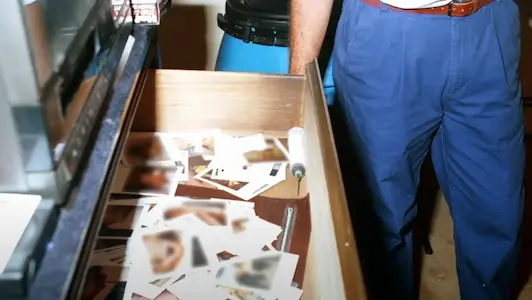
The 31-year-old bachelor was religious, or at least curious, because of the many audio tapes found lying around the room such as the King James Version, Numerology, the Devine Triangle, a book about learning Latin, and a tape on the Genesis Flood.
There were also homosexual porn VHS tapes laying about containing Cocktales, Chippendale's Tall Dark and Handsome, Rock Hard, Hard Men 2, Hard Men 3, Peep Show, and Tropical Heat Wave.
Jeffrey Dahmer's 72 polaroids
When officers entered the apartment, they immediately noticed a foul odor. As they began to search the premises, one of the officers opened Dahmer's bedside table drawer and made a chilling discovery - a collection of 72 disturbing Polaroid photographs. These images depicted Dahmer's victims in various stages of dismemberment. Some showed corpses in provocative poses, while others captured the process of Dahmer's twisted "experiments" on his victims' bodies. The photographs provided irrefutable proof of Dahmer's crimes and led to his immediate arrest.


Looking through the polaroids, police were shocked to see photos of severed heads, dismembered limbs, and decomposing torsos.
Jeffrey Dahmer told the police, "It’s just a nightmare, let’s put it that way,’ he said. ‘It’s been a nightmare for a long time, even before I was caught . . . for years now, obviously my mind has been filled with gruesome, horrible thoughts and ideas . . . a nightmare.’"
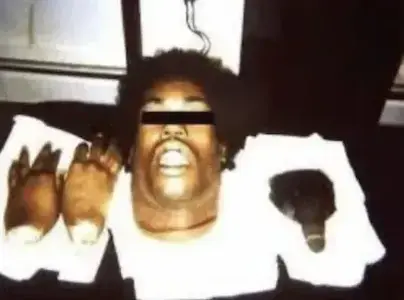
The Disturbing Contents of Dahmer's Polaroids
The Polaroid photos found in Dahmer's apartment were deeply disturbing and graphic in nature. They included:
- Images of dismembered corpses posed in sexually explicit positions
- Photos documenting various stages of his victims' deaths and dismemberment
- Pictures of body parts and organs Dahmer had kept as "trophies"
- Images showing Dahmer's attempts at crude lobotomies on some victims
For the investigators, these photographs were crucial evidence that left no doubt about Dahmer's guilt. They provided a horrifying visual record of his crimes that corroborated survivors' accounts and helped build the case against him.
Why Dahmer Took the Photos
Dahmer later explained that he took these photos for a few reasons:
- As "mementos" to remember his victims and relive the experiences
- To help him recreate poses with new victims
- For sexual gratification when he didn't have a live victim
The photographs served as a way for Dahmer to extend the "life" of his crimes beyond the act itself. They allowed him to revisit and relive his disturbing fantasies even after disposing of the bodies.

The Psychological Impact on Investigators
For the police officers and investigators who had to view and catalog these graphic images, the psychological toll was immense. Many reported having nightmares and requiring counseling to deal with the trauma of what they had seen.
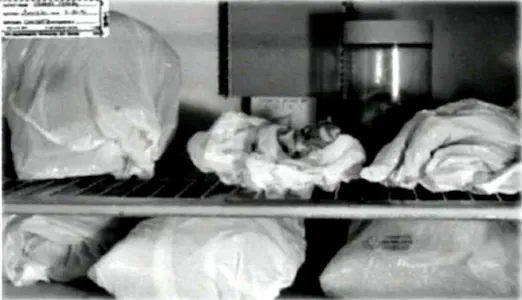
Detective Patrick Kennedy, one of the lead investigators on the case, later recalled:"The photographs were the most disturbing things I'd ever seen in my life. They'll stay with me forever."The visceral horror of the Polaroids brought home the true depravity of Dahmer's crimes in a way that even crime scene evidence could not fully convey.
Other Evidence Found in the Apartment
While the Polaroid photos provided some of the most shocking visual evidence, Dahmer's apartment contained numerous other disturbing items that pointed to his crimes, including:
- Several dismembered body parts in his refrigerator and freezer
- Two human skulls
- Preserved genitals and other organs in jars
- A 57-gallon drum containing decomposing human remains
- Bottles of acid he used to dispose of bodies
- Various tools and implements used for dismemberment
The combination of the photographs and physical evidence left no doubt about the extent and nature of Dahmer's killing spree.
Dahmer's Arrest and Confession
Upon discovering the Polaroids and other evidence, police immediately arrested Jeffrey Dahmer. During questioning, Dahmer quickly confessed to his crimes, providing gruesome details about his murders, cannibalism, and necrophilia.Over the next few weeks, Dahmer gave over 60 hours of recorded confessions, describing in detail how he lured victims to his apartment, drugged and killed them, and disposed of their remains. The Polaroid photos played a key role in corroborating his confessions and linking him definitively to specific victims.
The Trial and Sentencing
Jeffrey Dahmer's trial began on January 30, 1992. Given the overwhelming physical evidence and Dahmer's own confessions, the main question at trial was not his guilt, but his mental state. Dahmer's defense team argued that he was legally insane at the time of the killings.However, the jury rejected the insanity plea. On February 15, 1992, they found Dahmer guilty but sane on 15 counts of first-degree murder. He was sentenced to 15 consecutive life terms, for a total of 957 years in prison.
Dahmer's Life and Death in Prison
In prison, Dahmer initially was kept in protective custody due to concerns for his safety. However, he later requested to be placed in the general prison population, stating he was tired of being alone.On November 28, 1994, Dahmer was beaten to death by a fellow inmate, Christopher Scarver, while on work detail in the prison gym. Scarver later stated he killed Dahmer because of his crimes and Dahmer's habit of fashioning severed limbs from prison food to taunt other inmates.
The Victims and Their Families
While much attention has been focused on Dahmer and the gruesome nature of his crimes, it's important to remember the victims and the devastating impact on their families. Dahmer's known victims included:
- Steven Hicks, 18
- Steven Tuomi, 25
- Jamie Doxtator, 14
- Richard Guerrero, 25
- Anthony Sears, 24
- Raymond Smith, 32
- Edward Smith, 27
- Ernest Miller, 22
- David Thomas, 22
- Curtis Straughter, 17
- Errol Lindsey, 19
- Anthony Hughes, 31
- Konerak Sinthasomphone, 14
- Matt Turner, 20
- Jeremiah Weinberger, 23
- Oliver Lacy, 24
- Joseph Bradehoft, 25
These were real people with families, friends, and futures that were brutally cut short. The discovery of the Polaroids and subsequent investigation brought some closure to families, but the pain of their losses continues to this day.
Conclusion
The discovery of Jeffrey Dahmer's Polaroid collection marked a turning point in one of America's most notorious serial killer cases. These disturbing images provided irrefutable evidence of Dahmer's crimes and played a crucial role in his conviction.While the photos and other physical evidence from Dahmer's apartment paint a horrifying picture of his crimes, it's important to remember the human toll behind these gruesome artifacts. Each photograph represented a life cut short, a family devastated, and a community traumatized.



